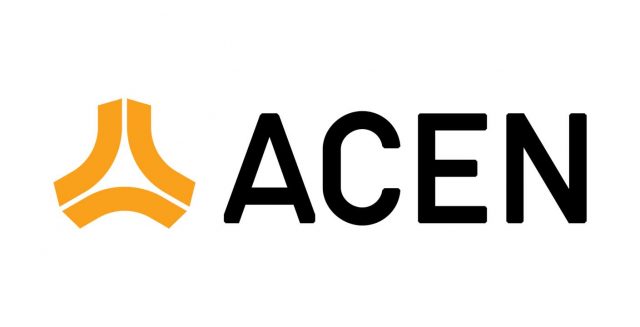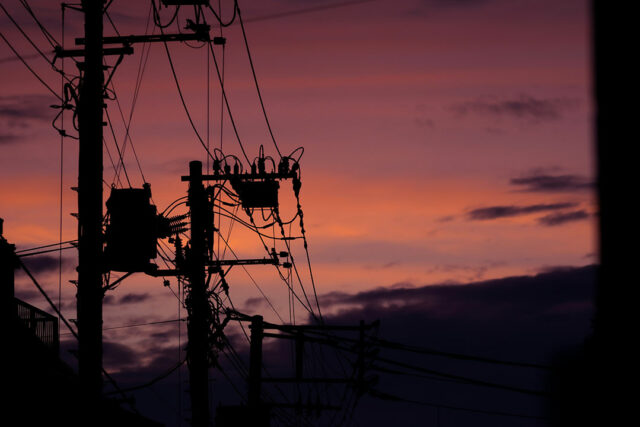Not too long after the BusinessWorld Economic Forum with the theme “PH NEXT: Growth Drivers” on May 22 and the Philippine Republic’s Economic Briefing with the heading “PH On-the-Go: Fast Tracking Economic Progress” on May 27, both of which highlighted the importance of sustainable, renewable energy (RE) to power economic development, the National Grid Corp. of the Philippines (NGCP) raised red and yellow alerts over the Luzon grid.
In its advisory, the NGCP announced that the Luzon grid was on red alert between 2 and 5 p.m. and between 8 and 9 p.m. A red alert signals a situation where the power supply is not enough to meet consumer demand and the transmission grid’s regulating requirement. Power outages may occur if system conditions do not shape up.
A yellow alert was also issued for between noon and 2 p.m., 5 and 8 p.m., and 9 p.m. and midnight. A yellow alert is raised when the operating margin is not enough to meet the transmission grid’s contingency requirements. If the yellow alert extends without any improvement, it transitions to a red alert.
This was not the first time that these alert advisories were issued. On April 18, for instance, both Luzon and the Visayas were placed under either red or yellow alerts, or both in the case of the main island. The Visayas’ yellow alert was for an extended period of eight hours, from 1 to 9 p.m. Starting just last Monday, June 3, Metro Manila and nearby provinces were advised that they would likely be hit by power interruptions the whole week. There is just not enough power to guarantee a continuous supply.
As clarified by Meralco, the situation remained precarious because any emergency shutdown of a power plant could ultimately affect the stability of power “unless more generating capacities become available soon…” Bound to affect at least two million people during a red alert, as it did last Saturday, rotational power interruptions may well be the new normal.
BusinessWorld’s economic forum highlighted what the private sector is doing to advance sustainable and responsible practices in the power sector.
First Gen Corp. (First Gen) reported on their pioneering investment efforts in gas-fired power plants, with a subsequent shift to RE via their geothermal plants. Geothermal sources are supposed to deliver more reliable baseload power.
Given the Department of Energy’s Philippine Energy Plan to upgrade the share of RE from 20% to 35% and eventually to 50%, First Gen will continue to rely on gas-fired power plants during the transition. Additionally, in anticipation of Malampaya’s fast depleting gas deposit, the corporation is also developing liquefied natural gas (LNG), although geothermal power plants may continue to be its flagship.
The Ayala Corp. and ACEN experience highlights the significant strides of a private sector firm that produced zero megawatts (MW) 15 years ago to five gigawatts (GW) of RE capacity today. Realizing that the Philippine economy is poised to continue growing robustly, an enormous amount of power is absolutely necessary. ACEN is gunning for an expansion to 20 GW by 2030, consisting mostly of solar and wind capacity.
For power distributor Meralco, sustainability transcends going green and decarbonizing. Electricity could be used “as an enabler to power better lives for communities.” Nonetheless, Meralco is securing 1,500 MW of renewable power supply contracts in the next five to seven years and producing on its own 1,500 MW of attributable RE capacity.
In helping manage the Wholesale Electricity Spot Market (WESM), the Independent Electricity Market Operator of the Philippines (IEMOP), in its role as central registration body in the power retail market and virtual clearing house of various power programs, could promote more purchases of RE in the Philippines.
Our takeaway from this power conversation is that more significant generating capacities would not be available very soon, not within the next four to five years. Without question, the private sector is deep into the power sector, but we are rather late in the game. For instance, the proposed investment of the Maharlika Fund in the Palawan energy sector to help stabilize the province’s power supply and boost tourism will not come on stream in the next few months. Only a feasibility study will be available by the third quarter of 2024.
First Gen’s $1.27-billion capital expenditure will fund RE projects and the completion of its LNG facility. These would add 9,500 MW of power generation. But only seven new power plants run by hydrogen, solar, and wind are expected to be completed by the end of 2024, with an aggregate capacity of only 83 MW. The other projects will start producing power only by 2030.
On solar, Razon’s Prime Solar Solutions is now exploring the possibility of floating solar projects, leveraging on the water assets of its mother company, Prime Infrastructure Capital. While the expected capacity could be substantial, timing is crucial. Razon is quite aggressive in building more solar fields in the country, but all of these must follow scheduled execution by year while the country needs more power today.
The President’s excitement over the possibility of adapting Brunei’s waste-to-energy solution could be short-lived unless the involvement of local governments in organizing garbage collection is rationalized. Razon’s waste management facility in Pampanga may be a good model in processing waste into energy for ships, airplanes, trucks, and other utility vehicles. But it could be risky to start counting on potential power generation from this source until the actual technology for fuel conversion is finalized.
Napocor’s plan to bid out to the private sector the building of RE generation plants and facilities “to supplement, augment, or replace existing capacities” in off-grid areas in Batanes, Palawan, Bicol, and Tawi-Tawi sounds promising. The contract will run for 20 years, which would provide that Napocor would serve as the so-called offtaker and pay for the energy delivered to its switchyard, including losses.
It is difficult to aspire to develop new growth drivers unless the enabling infrastructure of energy is readily available, cheap, and reliable. Malampaya poses a grave social risk, but the political solution is beyond private business. We note, however, the absence of any reference to either hydroelectric or nuclear power. Would the retrofitting of our aging hydroelectric power plants take a longer time to do than other renewables? Or would perhaps putting up nuclear power reactors — with all the safeguards of recent years — address the urgency of developing reliable and sustainable power sources?
What about coal? Are we going to put that in the backburner due to the current concerns about the environment? Coal continues to be the most abundant power source and generally the cheapest. It is more inflation-friendly.
On the other hand, during the Republic’s economic briefing, no less than Secretary Frederick D. Go recognized the key role of the semiconductor and RE sectors to drive economic growth. Since the government allowed full foreign ownership of renewable energy projects in 2023, Mr. Go reported that most investment applicants in power are RE champions. As of two months ago, 51 RE projects worth P1.57 trillion have been approved through the “green lane” in all public agencies to fast-track approval and registration.
When do we expect some fruits to ripen from such investment interest?
If we go by the official plan to increase the share of RE to the total energy mix, we can expect more power capacity by 2030 and 2050. But going through the “green lane” could expedite the whole process given that much of the bottleneck lies in securing registration, permits, and approvals. As Jose M. Layug of the Developers of RE for Advancement, Inc. assured the briefing participants, “if we fast-track all these permits, we can easily build RE plants which have shorter construction periods compared to the conventional power plants.” Solar plants can be built in nine months; wind in 18 months; and biomass/hydro in 24 months.
Beyond power generation, which remains time-sensitive, fundamental issues related to the transmission grid and inter-island connections have to be resolved. Full energy transition to RE may be more difficult than we think.
Higher power rates, according to Nomura’s recent report — aside from poor infrastructure and prohibitive transport and logistics costs — have been driving investors away from the Philippines and Indonesia despite their spectacular growth performance and demographic advantages. For ordinary consumers, the news about another possible increase in power charges is not exactly inspiring confidence because they stand to shoulder some P15.77 billion in higher power generation over the next three years.
We know the drill and we know the consequences. It’s next to imagining things to aspire for high growth and low inflation when we pay more for prolonged darkness and heat during a power outage.
Diwa C. Guinigundo is the former deputy governor for the Monetary and Economics Sector, the Bangko Sentral ng Pilipinas (BSP). He served the BSP for 41 years. In 2001-2003, he was alternate executive director at the International Monetary Fund in Washington, DC. He is the senior pastor of the Fullness of Christ International Ministries in Mandaluyong.













